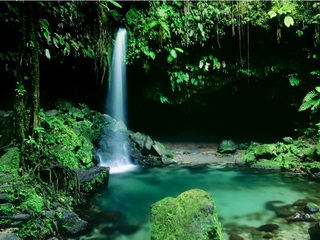search for a Trip
Lushan lies in the south of Jiujiang City, Jiangxi Province. It has a vantage position to the south of China's longest river, the Yangtze River, to the north of the Tengwang Pavilion, to the east of the railway from Beijing to Kowloon and to the west of China's largest freshwater lake, the Poyang Lake.
The national park covers an area of 500 square kilometers (about 320 square miles) and has more than 90 mountain peaks. The tallest of these is Hanyang Peak which soars to a height of 1473.4 meters (4,834 feet). Lushan owes its reputation to its wonderful, elegant, steep and spectacular features that embrace ravines, waterfalls, grottoes, rocks and rivulets.


There are 12 main scenic areas, together with 37 attractions, over 900 cliff inscriptions, and over 300 steles. The major spots include Wulao Feng, Sandie Spring, Lulin Lake, Flower Path, Ruqin Lake, Jinxiu Valley, Xianren Dong and Donglin Temple, etc.
Its main protection targets are forest ecosystem, cultural heritages, glacier features and natural landscape. More than 40 species of plants found here are either rare or local special species including Katsura tree, Manglietia fordiana, Chinese tulip and eucommia.
Animals under the state protection include leopard, giant salamander, civet, python, pangolin, Hydropotes inermis, muntjac, silver pheasant, white crane, mandarin duck and so on. In addition, there are 26 ancient glacier heritages such as cirque, icehouse and deep valleys. The Lushan Reserve was listed as a World Nature Heritage in December 1996.
Related Tours:
China Attractions Guide
- Anhui Attractions
- Beijing Attractions
- Chongqing Attractions
- Fujian Attractions
- Gansu Attractions
- Guangdong Attractions
- Guangxi Attractions
- Guizhou Attractions
- Hainan Attractions
- Henan Attractions
- Hongkong Attractions
- Hubei Attractions
- Hunan Attractions
- Inner Mongolia Attractions
- Jiangsu Attractions
- Jiangxi Attractions
- Manchuria Attractions
- Ningxia Attractions
- Qinghai Attractions
- Shaanxi Attractions


